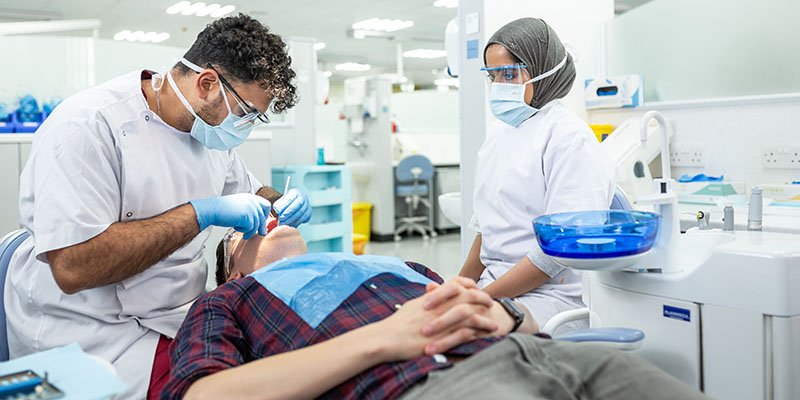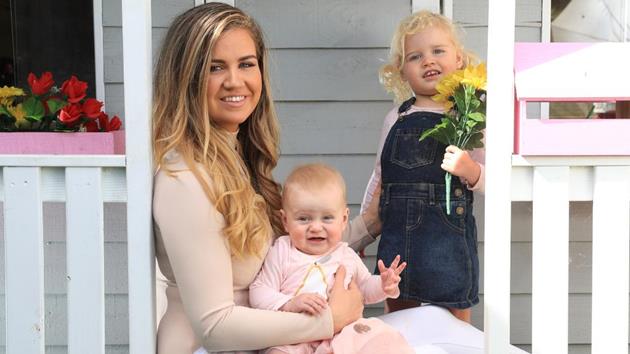If you live in Australia and are looking for a way to make your dental care more affordable, consider the possibility of government-funded dental implants.
There are many government grants for dental implants Australia available across the country that can help offset the cost of procedures like dental implants.
You undoubtedly already know that dental implants are frequently regarded as the greatest tooth replacement option if you’re considering having lost teeth replaced with them, whether for cosmetic dentistry or health reasons.
The main issue with this is the potential cost of implants. It follows that your search for dental grants for implants makes perfect sense.
What Are Implants?
Titanium alone is used to make implants. They function like normal tooth roots because they are relatively small and fit into the bone behind the gum.
They can be tailored to match your specific needs and used for all types of tooth loss.
Let’s go over the various varieties you can choose from now that you have a better knowledge of what they are.
Three Types Of Dental Implants
Endosteal, subperiosteal, and zygomatic dental implants are the three most popular varieties available.
Subperiosteal is the second most frequent and safest, followed by zygomatic, which is the final and most complicated. It is rarely employed.
Endosseous Implants
The most prevalent kind of dental implant is endosteal. The majority of patients can benefit from them, but they need a strong, healthy jawbone for the post to fuse to.
They are designed like screws and serve as stand-in posts. They insert into the jaw, which is where the fake teeth are attached.
After the surgery, the wound needs some time to heal. It needs time to come together and fortify itself. The false teeth can be attached to the post to blend in with the neighboring teeth once it has healed.
The second-most popular implant may appeal to you more if you don’t like the notion of having anything inserted into your jawbone.
Supraperiosteal Implants
Subperiosteal Implants are yet another variety of dental implants.
The primary substitute for endosteal implants is this.
Subperiosteal implants lay on top of the jawbone but are still buried beneath the gums, as opposed to being fastened into the jawbone.
Under the gum, a metal frame with a post attached to it is positioned. Following that, the gum heals around the frame, holding it in place.
The poles that protrude from the gum are used to hold the fake teeth in place.
This method is only done when the patient’s jawbone is insufficient for implant placement or when the patient simply does not want to undergo extensive oral surgery to add bone to the area.
Implants Zygomatic
The least popular type of dental implant you can get is a zygomatic implant.
The only time you should undergo this complex treatment is if your jawbone is insufficient to support an Endosteal implant.
Instead of the patient’s jawbone, the implant is inserted into the cheekbone.
After learning about the three different types of implants, you may now be interested in learning about implant procedures.
Having said that, here are Government grants for dental implants in Australia:
Government Grants for Dental Implants Australia
Low-Income Dental Care & Dental Care For Pensioners
You qualify for government dental care subsidies if you have a health care card or a senior concession card.
A bill will be given to the patient (or parent/guardian in the case of minors) for any fees associated with emergency or general dental care received at a public dental clinic or from a private dentist who participates in the government-subsidized oral health care program.
All dental fees follow the Department of Veterans Affairs dental fee schedule.
The West Australian Government will subsidize dental care received in a public dental clinic or through a participating private dental clinic up to a maximum of 75% of the cost of the care.
Up to 75% of the cost of the treatment may be covered by the government.
The actual amount of dental assistance that a person is qualified to receive is determined by their eligibility, which is determined at the dental office.
For more information, visit this page
Child Dental Benefit Schedule
Around 3 million children between the ages of 2 and 17 have access to benefits for basic dental services according to the Child Dental Benefits Schedule, which went into effect on January 1st, 2014.
Over two calendar years, each child is only eligible for up to $1,000 in total benefits.
Your youngster must meet all of the requirements to receive it.
0 to 17 years old, eligible for Medicare for at least one day during that calendar year, receiving payments from us at least once annually, or having a parent receiving payments from us at least once annually.
For more information, visit this page
The Clark Family Award
William, Pam, and Allison Clark fund a $10,000 annual research award through the Clark Family Research Award.
It is given to the top-ranked application in a field of research where sustainability in dentistry is either the primary focus or a substantial by-product of the project, such as clinical dentistry with a singular focus on sustainability.
Dentistry must prioritize sustainability, thus it is both smart and appropriate that the Clark Family has proposed to fund this crucial field of study.
Oral Medicine Academy of Australasia
The Oral Medicine Academy of Australasia Research Award provides $2,000 each year to support the top oral medicine research submission.
GC Australasia Dental Pty Ltd
The GC Australasia Award offers $5,000 each year to support research in minimally invasive dentistry.
International College of Dentists – Australasian Section & the ICD Syd Dobbin AM Grant
The International College of Dentists – Australasian Section – ICD Award provides up to $5,000 annually towards community oral health.
In 2019, the International College of Dentists established the ICD Syd Dobbin AM Grant which is a $5,000 Award in memory of Dr. Dobbin.
Free dental implants in South Australia
South Australian residents over the age of 65 are eligible to receive a free dental implant.
The grant is available regardless of whether or not you are eligible for the NDIS, but it can only be used for one implant placed in an upper jaw.
Many Australians are eligible for government-funded dental care, including dentists.
If you are eligible for government-funded dental care, a dentist will provide the service at no cost to you.
If you are not eligible for government-funded dental care but want to get dental treatment from a dentist, then it may be possible to pay for that treatment in installments over an extended period. It would be best if the dentist agrees to treat you on this basis.
A list of dentists who accept government-funded dental care can be obtained by contacting your State or Territory Health Department or by visiting their website
In Closing
You’ll discover that state-funded insurance plans and low-cost dental plans are less likely to give you the treatment you need when it comes to cosmetic dentistry.
Even so, it’s possible that the aesthetic treatments you want or need won’t be covered by your dental insurance.
For those who require dental services, including dental implants, there are fortunately private and public scholarships available through collaborating dentists.
Occasionally, a cosmetic dental grant is given directly to the patient, but more often than not, grants are given to charitable groups that subsequently use the funds to benefit their local communities.
Conclusion:
I hope this article has been helpful.
I know how frustrating it can be when you’re looking for information and can’t find it, so I wanted to make sure that anyone interested in government-funded dental implants knows they have options available.
If you have any questions, don’t hesitate to comment below! Do you have suggestions about these government grants for dental implants Australia? Please leave a comment below.


